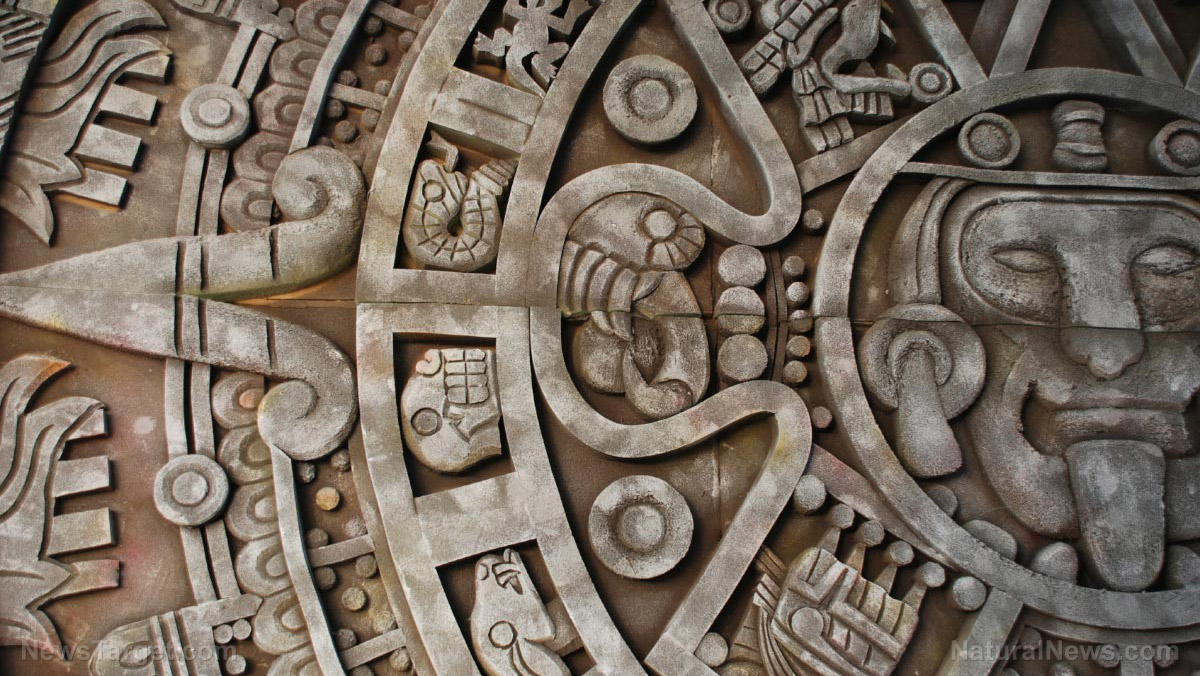Ancient Maya civilization purified water using filtration system made of crystal minerals
10/29/2020 / By Virgilio Marin

Researchers from the University of Cincinnati discovered that the Ancient Maya likely had a sophisticated water purification system made of quartz and zeolite, a non-toxic crystalline compound composed of silicon and aluminum. The researchers uncovered the minerals in the Corriental reservoir, a major source of drinking water for the Mayans who lived in what is now northern Guatemala.
In an article published in the journal Scientific Reports, the researchers said that a mixture of quartz and zeolite acted as a “natural molecular sieve” to the water flowing through the reservoir. The water filter removed harmful substances and was used by Ancient Mayans since their discovery of it more than 2,000 years ago.
Finding the source of the minerals
Finding ways to collect and store clean water was important for the Maya. Several Mayan cities were built atop porous limestone that made clean water difficult to obtain during seasonal droughts. However, there is little evidence that the Maya had a water purification system.
To investigate, the researchers did excavations in three reservoirs and a sinkhole in the ancient city of Tikal in northern Guatemala. Tikal was chosen out of all Mayan cities because the water coming into the city was prone to contamination.
Using X-ray diffraction analysis, the team examined sediment samples taken from all four sites and found that only the Corriental reservoir contained zeolite. The mineral was abundant in the site even though it was not native there. The researchers traced the zeolite back to its source and found a close match in Bajo de Azúcar, which was about 18 miles northeast of Tikal.
“It was an exposed, weathered volcanic tuff of quartz grains and zeolite. It was bleeding water at a good rate,” said co-author and geographer Nicholas Dunning, who discovered the potential source of the mineral about 10 years ago while conducting fieldwork in Guatemala. He said that the tuff – a light, porous rock formed by the consolidation of volcanic ash – was popular among locals for how clean and sweet the water was.
The Maya’s sophisticated water filter
According to the researchers, the Mayans in Tikal likely made their filtration system by using woven petate (palm fiber matting) to hold the minerals together. They placed this contraption behind dry-laid stone walls that were positioned where stormwater typically enters the reservoir.
Coauthor and anthropologist Kenneth Barnett Tankersley said that the ancient water filter likely removed harmful microbes, heavy metals like mercury, nitrogen-rich compounds and other toxins from the water.
Zeolite, according to the researchers, was the crucial component of the water filter. It had adsorbent properties that could remove organic substances due to its three-dimensional microcrystalline pore spaces. According to Dunning, the Mayans must have had observed that zeolite was capable of purifying water and thus brought it back to Tikal along with quartz.
Co-author and biologist David Lentz said that the filtration system likely protected the ancient Maya from harmful cyanobacteria and other toxins, which otherwise would have had made them sick. In fact, the researchers found no evidence of blue-green algal blooms in the Corriental reservoir. These blue-green algal blooms were toxic overgrowths of cyanobacteria in the water.
According to Tankersley, complex water filtration systems were observed before in ancient civilizations in Greece, Egypt and South Asia. None, however, had been observed in the ancient New World prior to the study. “The ancient Maya lived in a tropical environment and had to be innovators,” said Tankersley. (Related: How the Ancient Maya civilization cultivated organic crops using herbal medicine to combat pests.)
Yet even more remarkable is that both quartz and zeolite are still used today in some filtration methods. “What’s interesting is this system would still be effective today and the Maya discovered it more than 2,000 years ago,” Tankersley added.
Artifacts.news has more on amazing archaeological finds.
Sources include:
Submit a correction >>
Tagged Under:
ancient history, ancient Mayan innovation, Archaeology, artifacts, discoveries, Maya civilization, quartz water filter, research, water purification, zeolite water filter
This article may contain statements that reflect the opinion of the author
RECENT NEWS & ARTICLES
COPYRIGHT © 2017 RESEARCH NEWS



















